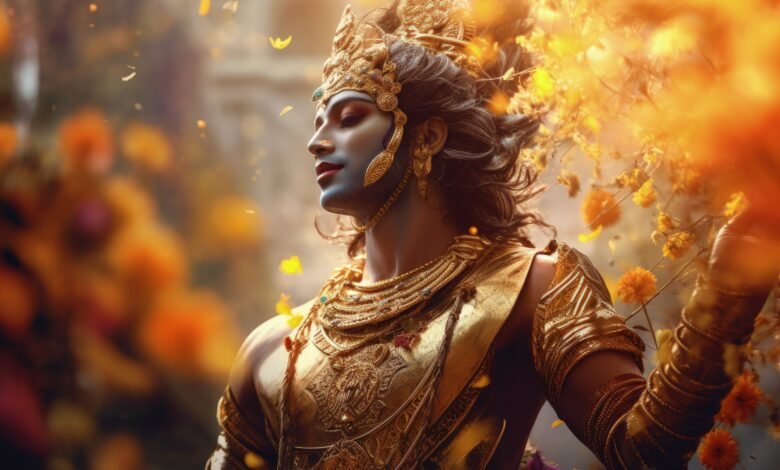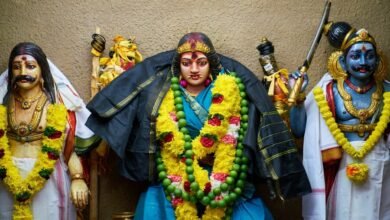Vajrakarur: The Indestructible Force of Spiritual Resilience

In the realms of ancient mysticism and esoteric traditions, few symbols carry the weight of transformative power as profoundly as Vajrakarur. Rooted in the depths of Tibetan Buddhist philosophy and tantric practices, Vajrakarur represents an indomitable fusion of wrathful energy and enlightened wisdom. Often depicted as a deity or ritual implement, it embodies the unyielding resolve to dismantle ignorance and ego, paving the path toward spiritual liberation. This article explores the multifaceted dimensions of Vajrakarur, unraveling its symbolism, purpose, and enduring relevance in both historical and contemporary contexts.
Origins and Mythology: The Birth of a Divine Protector
Vajrakarur’s origins lie in the rich tapestry of Vajrayana Buddhism, a tradition steeped in tantric rituals and the veneration of deities who embody both compassion and ferocity. Mythologically, Vajrakarur is often linked to Guru Rinpoche (Padmasambhava), the 8th-century sage who introduced Buddhism to Tibet. According to legends, Guru Rinpoche invoked Vajrakarur as a manifestation of “vajra wrath”—a force capable of subduing malevolent spirits and obstacles hindering spiritual progress. This deity’s iconography, adorned with flaming hair, a crown of skulls, and a vajra (thunderbolt) scepter, reflects its role as a destroyer of delusion and a protector of dharma.
Symbolism of the Vajra: The Unbreakable Thunderbolt
At the heart of Vajrakarur’s identity is the vajra, a ritual object symbolizing the indestructible nature of enlightenment. The vajra’s structure—a central sphere with prongs extending outward—mirrors the union of method and wisdom, a core tenet of Buddhist philosophy. When wielded by Vajrakarur, the vajra becomes a tool to “shatter” ignorance, attachment, and fear. Its unyielding material (often depicted as diamond or iron) represents the practitioner’s resolve to confront inner and outer adversities without faltering. This duality—of destruction and creation—positions Vajrakarur as a guide through the chaos of samsara toward clarity.
Rituals and Practices: Harnessing Wrathful Energy
Vajrakarur’s worship is not for the faint-hearted. Tantric rituals involving this deity often include intricate visualizations, mantra recitations, and offerings meant to channel its fierce energy. Practitioners meditate on Vajrakarur’s form to internalize its qualities: the courage to face suffering, the discernment to cut through illusion, and the compassion to act for others’ benefit. These rituals, though intense, are designed to transmute negative emotions into wisdom. For example, the Vajrakilaya practice, a related rite, uses a ritual dagger (phurba) to “nail down” obstacles, mirroring Vajrakarur’s function as a spiritual liberator.
The Role of Wrathful Deities in Enlightenment
A common question arises: Why do Buddhist traditions embrace wrathful figures like Vajrakarur? The answer lies in the Mahayana ideal of skilful means—using any method necessary to guide beings toward awakening. Vajrakarur’s terrifying appearance is not an endorsement of violence but a metaphor for the radical inner work required to dismantle ego. Its wrath is directed not at external enemies but at the internal poisons of greed, hatred, and delusion. By confronting these shadows, the practitioner cultivates fearlessness, a quality essential for navigating the path to enlightenment.
Vajrakarur in Art and Culture: Beyond the Temple
Beyond ritual spaces, Vajrakarur’s influence permeates Himalayan art, literature, and folklore. Thangka paintings depict the deity amidst flames, surrounded by a retinue of dakinis (wisdom beings) and defeated demons—a vivid allegory of wisdom triumphing over chaos. In festivals like the Tsechu in Bhutan, masked dancers embody Vajrakarur to reenact myths and bless communities. These cultural expressions reinforce the deity’s role as a societal protector, warding off calamities and fostering collective resilience. Even modern adaptations, such as contemporary Buddhist murals, reinterpret Vajrakarur’s imagery to address modern struggles like environmental crisis or mental health.
6. Modern Relevance: Vajrakarur in a Fractured World
In an era marked by existential anxieties and societal fragmentation, Vajrakarur’s symbolism offers a potent antidote. Its unrelenting energy mirrors the urgency needed to confront global crises—climate collapse, systemic injustice, and spiritual apathy. For activists, healers, and meditators alike, Vajrakarur becomes a metaphor for unshakeable resolve: the courage to “destroy” outdated systems and nurture regenerative paradigms. Moreover, its emphasis on inner transformation reminds us that societal change begins with personal accountability—a lesson as vital today as it was in medieval Tibet.
Conclusion: The Eternal Dance of Destruction and Renewal
Vajrakarur’s legacy endures not because of its fearsome facade, but because of the profound truths it embodies. It teaches that destruction is not an end, but a precursor to rebirth; that wrath, when guided by wisdom, becomes a force for liberation. Whether through ancient rituals or modern metaphors, Vajrakarur invites us to embrace the chaos within and without, trusting that within the storm lies the clarity of the vajra—indestructible, luminous, and eternally resilient.


